Monthly Archives:
Air Spade: How it Works
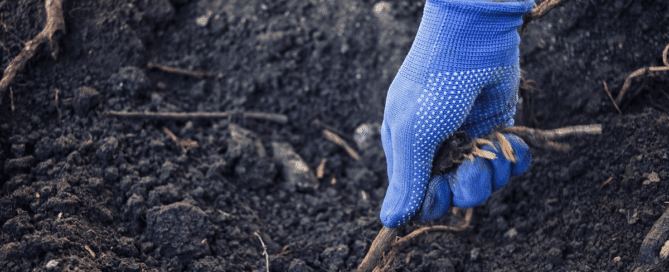
Friendly Tree is proud to offer a wide range of tree services, including professional root excavation. This involves removing soil around a tree’s roots with a tool called an Air Spade.
By using the Air Spade, our team can access and examine the root system without causing tissue damage. Not sure how it works? Ahead, learn about the Air Spade and how it can help your trees.
How an Air Spade Works
The Air Spade is an excavation device that’s used by professional arborists. It’s a heavy-duty handheld tool that consists of a long stick, or barrel, with a nozzle at one end. The other side is attached to an air compressor, which releases high-pressure air through the barrel.
By the time it reaches the nozzle, the compressed air turns into a rapid jet-like stream. In fact, according to Air Spade, the air that comes out moves at about 1,200 mph!
During an Air Spade service, your arborist will point this nozzle to the soil around a tree’s roots. The force of the air will dislodge soil and other particles. It’s even strong enough to break apart compacted soil, so it’s much faster than manual excavation.
Despite its speed and strength, the stream of air won’t harm the tree’s roots. It also won’t damage non-porous materials such as pipes and cables underground. Instead, the compressed air will simply break apart soil, leaving the root system exposed and ready for inspection.
Why Use an Air Spade for Root Excavation?
The Air Spade is a faster, more efficient alternative to manual excavation. Digging up soil by hand is a time-consuming task. It’s also unsafe for the roots; one wrong move and a hand spade can easily cause damage. This is especially likely if the soil is heavy and compacted, which requires more force with a hand spade.
And remember, the tree’s root system is extremely sensitive. If the roots are injured, the entire tree may suffer.
With an Air Spade, an arborist can safely remove the soil while saving you time.
When to Use an Air Spade
An Air Spade for root excavation may be used for:
- Preparing a property for tree planting
- Identifying tree diseases
- Root pruning
- Preparing for root and tree inspections
- Repairing soil compactions
- Creating trenches for construction projects
- Removing extra soil after construction
- Vertical mulching
- Removing trees that were planted too deep
Need Air Spade Services? Contact Friendly Tree
If you need a root excavation or inspection, an Air Spade may come in handy. Friendly Tree can explain how it works and what you can expect during Air Spade services. We may also recommend using the tool for the purposes mentioned above.
For tree servicing in New Jersey, contact Friendly Tree online or call us at (973) 678-8888. Our expert tree technicians offer tree pruning, tree removal, stump grinding, and more.
How Often Do I Need a Tree Inspection?
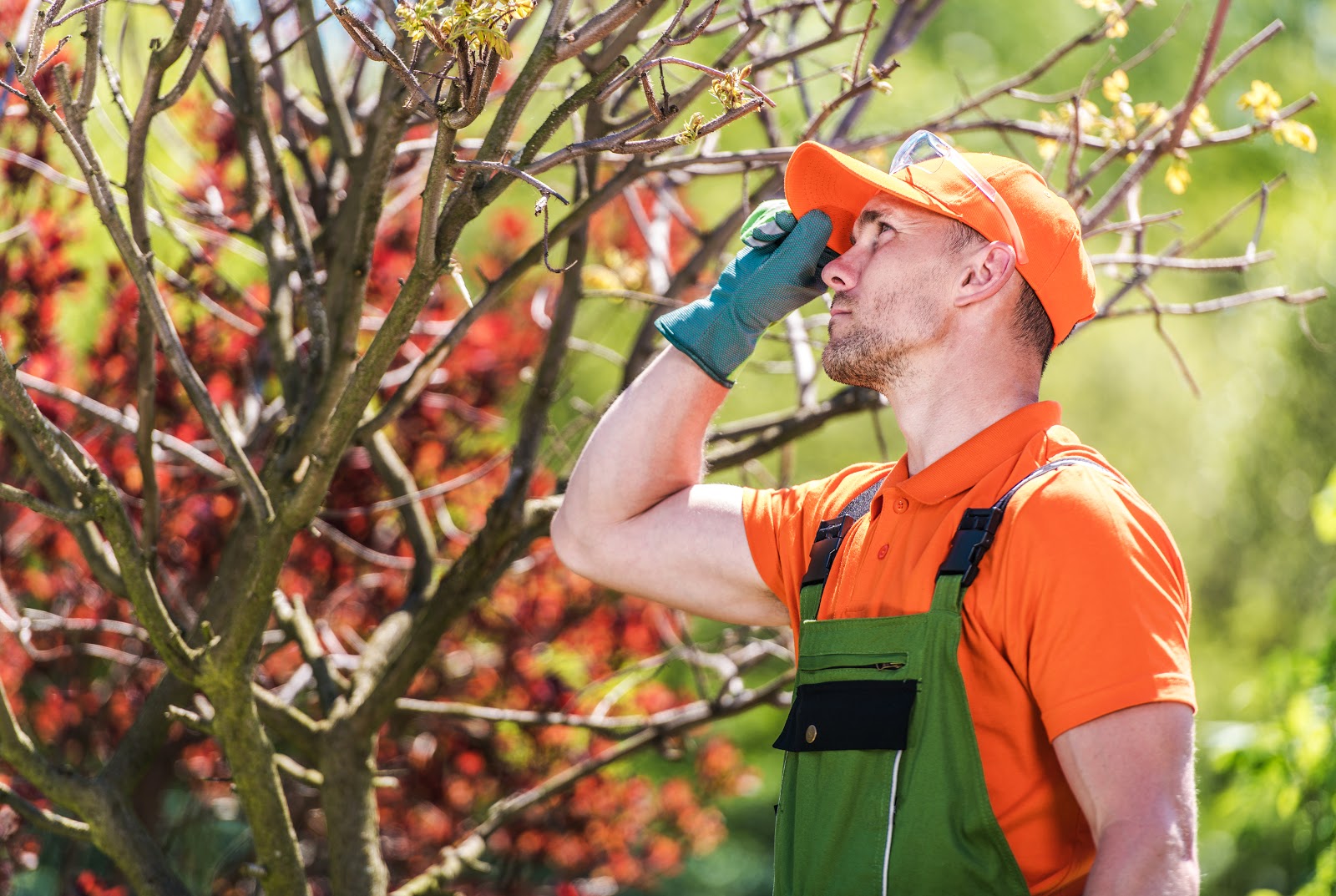
When you think of inspections, what comes to mind? If you’re like most people, it likely sparks thoughts of car and home inspections.
However, if there are trees on your property, it’s worth thinking about tree inspections as well. These checkups, which are performed by a professional arborist, involves a thorough evaluation of your tree’s trunk, bark, and branches. It also includes a careful assessment of the soil around your trees.
These routine inspections are crucial for tree maintenance and care. But how often do you need tree inspections, anyway? And is it necessary if your trees are healthy and well?
The Importance of Tree Inspections
There’s the popular saying, “an ounce of prevention is worth a pound of cure.” The phrase, which was coined by Benjamin Franklin in the 1730s, originally referred to fire safety.
Yet, the saying holds true for many scenarios, including tree health. A tree inspection allows an arborist to identify (and resolve) issues before they become an expensive or dangerous problem.
During a tree inspection—also known as a tree risk assessment—your arborist can:
- Diagnose tree diseases
- Identify pest infestations
- Detect structural damage, especially after inclement weather
- Protect your family and property by removing branches that may fall
- Identify specific watering needs
- Determine the best soil for your trees
Recommended Tree Inspection Frequency
Even if your trees are thriving and undamaged, it’s essential to get regular tree inspections.
The exact frequency depends on your trees, property, and climate. But in general, it’s recommended to have your trees inspected every three years.
You should also get a tree inspection if you experience extreme weather, like a thunderstorm or drought. Likewise, you’ll also need an inspection if you notice signs of declining health, such as decaying branches or pests. In this case, it’s best to book a tree inspection ASAP for safety purposes.
Contact Friendly Tree for Tree Inspections in Northern New Jersey
Our certified arborists can carefully examine your trees, and ultimately, determine how often you need tree inspections. If we identify any problems, we are happy to provide expert services for fixing common tree issues. This includes tree removal, tree pruning, and tree stump grinding.
Since 1989, Friendly Tree has offered professional tree services throughout northern New Jersey. We have multiple locations, including Orange, Montclair, Madison, Rutherford, Union, New Providence, and Morristown. To learn more about our New Jersey tree services, call us at (973) 678-8888 or request a quote online.
Arborist Tree Trimming: Everything You Need to Know
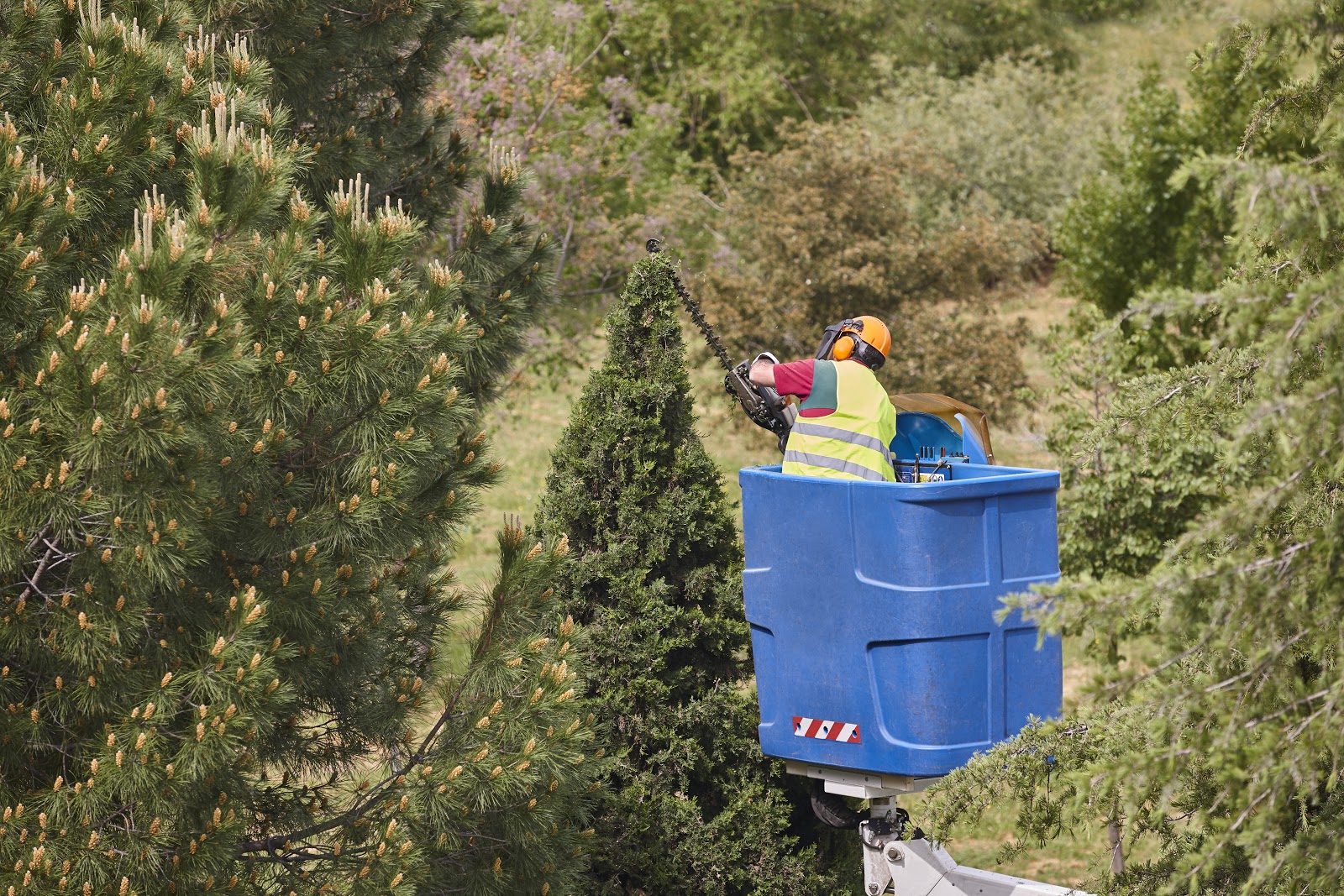
Is it time to trim your trees? Instead of reaching for a pair of shears, you may want to contact a professional instead. When done by an experienced arborist, tree trimming can enhance both the appearance and health of your plants.
Here’s what you need to know about the tree service:
Tree Trimming vs. Tree Pruning
Though “trimming” and “pruning” are often used interchangeably, the services do have some differences.
Tree trimming is mostly done for aesthetic reasons. It involves removing parts of trees, hedges, and shrubs in order to maintain a certain shape and look. This is key for retaining the beauty of your landscape.
After all, without regular trimming, plants can become overgrown and untidy. The service gives them a neat, clean appearance while removing branches that may prevent moisture and light from reaching nearby plants.
Tree pruning also enhances a tree’s structure and shape. However, its main goal is to promote good health by removing dead and infected branches. (Otherwise, insects and disease can easily spread and kill the tree.) This increases the tree’s lifespan and reduces hazards, since damaged branches are more likely to fall.
Why Hire an Arborist for Tree Trimming
Contrary to popular belief, tree trimming isn’t as simple as clipping away a few branches.
The practice should be done in a strategic and careful manner. Specifically, a tree needs to be trimmed in a way that maintains its health and promotes growth.
With that said, it’s a good idea to leave tree trimming to the pros. A certified arborist will know precisely where and how to trim a tree. They’ll also have the right tools for the job, as different techniques may call for different equipment.
An arborist will also know how to trim a tree safely, which is especially important if you need to trim taller or older trees.
Arborist Tree Trimming Cost
The cost of tree trimming depends on several factors, including:
- Type of tree
- Tree height
- Accessibility of tree
- Your location
- Your specific design requests
- Time needed for the job
Contact Friendly Tree for a quote based on your needs and property.
Tree Trimming Services in Northern New Jersey
Our experienced arborists are ready to improve the appearance and health of your trees through a range of services. We offer arborist tree trimming—along with tree pruning, tree removal, and tree planting.
To learn more, call Friendly Tree at (973) 678-8888 or request a quote online. We proudly serve South Orange, Montclair, Rutherford, Union, and Morristown.
How Much Does Bark Blowing Cost?
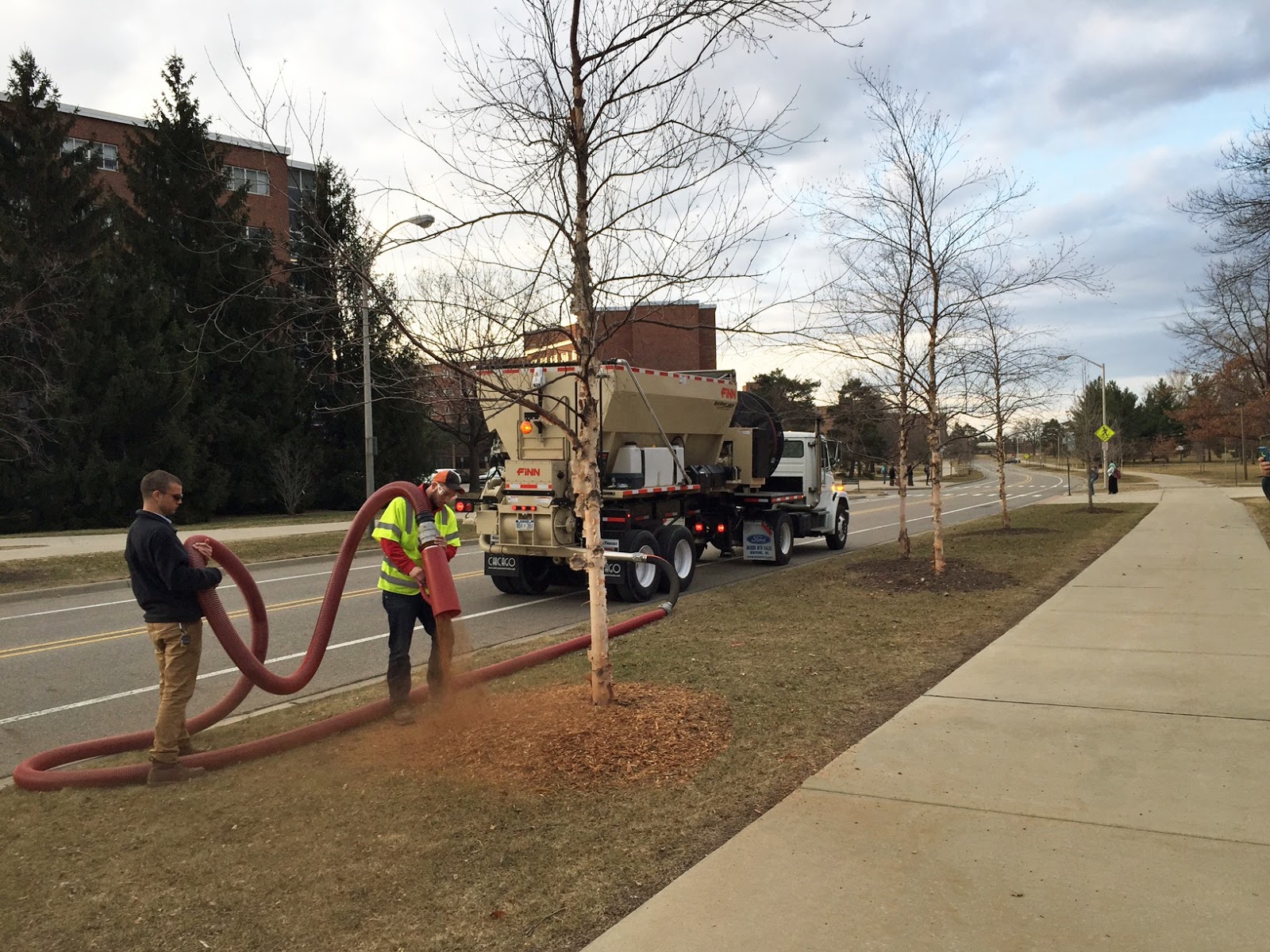
If you’re thinking about installing bark mulch, bark blowing is the way to go.
The method uses the force of compressed air, which swiftly moves bark through a hose. The result is a quick and smooth application that leaves your existing landscape undamaged. What’s more, bark blowing is faster than manual installation—which means you’ll save time and money.
But how much does bark blowing cost? To get an idea of your total fee, consider the following factors:
Installation Cost
In general, bark mulch installation costs $45 per cubic yard. This is in addition to the price of mulch, which we’ll explain further below.
Cost of Bark Mulch
The price of mulch varies by type. For example, colored mulch costs less than cedarwood mulch, which is more durable and long-lasting.
If you’re overwhelmed by the different types of mulch, get in touch with Friendly Tree. Our experts can suggest the best choice based on your price range and landscaping needs.
We also offer mulch products between $18 to $47 per cubic yard, so there’s something for every budget.
Size of Application Area
Since mulch is priced and applied by cubic yards, you can estimate the cost by considering the size of your mulch beds.
Not a fan of math? Don’t worry. On each of our mulch product pages, you’ll find a handy tool that computes the total estimated yardage needed. Simply enter the dimensions of each mulch bed, and let the tool do the rest. You can see an example on our page for natural cedar mulch.
Distance Between Area and Truck
Finally, the distance between your mulch bed and truck affects the total cost. Our hoses are 300 feet long, so we can easily access remote spaces on your property. This includes areas up or down hills, inside courtyards, or behind walls.
Of course, we will place the truck in the most strategic location possible. But if your application area is more than 200 feet away, we can add another 100 feet of hose. This costs $175 for every 100 feet per 20 cubic yards.
Interested in Professional Bark Blowing? Call Friendly Tree for Bulk Pricing
As a personalized service, the cost of bark blowing can vary greatly. However, Friendly Tree is happy to provide a quote; simply contact us online or call (973) 678-8888. We also have bulk pricing and discounts.
Friendly Tree offers other tree services as well. Whether you need tree planting or tree pruning in northern New Jersey, our team is here to help.
Air Spade Services: What to Expect
An Air Spade is a heavy-duty excavation tool that’s used by professional arborists. It utilizes compressed air to loosen and remove soil, which allows safe access to a tree’s root system.
Compared to digging with a traditional spade, using an Air Spade is an ideal alternative. It’s faster and safer, for arborists and trees alike.
The expert arborists at Friendly Tree offer Air Spade services in New Jersey. Here’s what you can expect during your appointment.
Air Spade Uses
Arborists use Air Spades to excavate soil around a tree. The high-pressure air effectively breaks up the particles without damaging the sensitive roots.
Specifically, an Air Spade may be used for the following purposes:
- Preparing a site for tree planting
- Fixing soil compaction
- Root collar excavation
- Root and tree inspections
- Diagnosing tree diseases
- Digging trenches for construction or utility projects
- Excavation of trees planted too deep
- Adding soil mixes
- Vertical mulching
- Root pruning
Using an Air Spade is also ideal for working with soil around existing buried objects, like utility lines.
What to Expect During Air Spade Services
When your arborist uses an Air Spade, the exact procedure will depend on why they’re using it in the first place. However, here’s what you can generally expect during the service:
1. Soil Preparation
You’ll need to water the soil to be aerated a day or two before your appointment. This will speed up the process, as moist soil is easier to break apart. It will also prevent excess soil from blowing away.
2. Clearing the Area
During your scheduled service, your arborist will remove shrubs, flowers, or grass from the work area. This will give them full access to the soil.
If possible, we recommend removing what you can before your appointment. Again, this will help things move things along. You might also want to hold on to any plants you want to keep and relocate.
3. Plan Ahead
Although Air-Spade services are quick and convenient, they can be noisy. If you have kids or pets who are sensitive to loud noises, you might want to make plants to ensure they aren’t present. Likewise, if you work from home, consider taking the day off (if possible) or working from a different location during your appointment.
4.Backfilling
If the excavated area is very deep but can’t be refilled right away, your arborist may backfill the space with coarse mulch or medium-sized stones. These materials offer air circulation around the roots.
Call Friendly Tree for Air Spade Services in New Jersey
Thanks to the trusty Air-Spade, Friendly Tree can remove or aerate the soil without damaging your existing trees. This is especially useful during root excavation services, along with the other purposes mentioned above.
If you’re unsure how to prepare your property for Air Spadework, feel free to reach out. We can explain what to expect during Air-Spade services and estimate how long the process will take.
Friendly Tree is also proud to offer tree removal, tree pruning, and more. To learn more about our residential tree services, call us at (973) 678-8888 or request a quote online.
Recent Posts
Archives
- August 2022
- June 2022
- May 2022
- April 2022
- March 2022
- February 2022
- January 2022
- December 2021
- November 2021
- September 2021
- August 2021
- July 2021
- June 2021
- April 2021
- March 2021
- February 2021
- January 2021
- December 2020
- November 2020
- October 2020
- September 2020
- August 2020
- July 2020
- June 2020
- May 2020
- April 2020
- January 2020
- December 2019
- November 2019
- October 2019
- September 2019
- August 2019
- July 2019
- June 2019
- May 2019
- April 2019
- March 2019
- February 2019
- November 2018
- September 2018
- August 2018
- July 2018
- June 2018
- May 2018
- April 2018
- February 2018
- September 2016
- August 2016
- July 2016
- June 2016
- May 2016
- April 2016
- November 2015
- August 2015
- March 2015


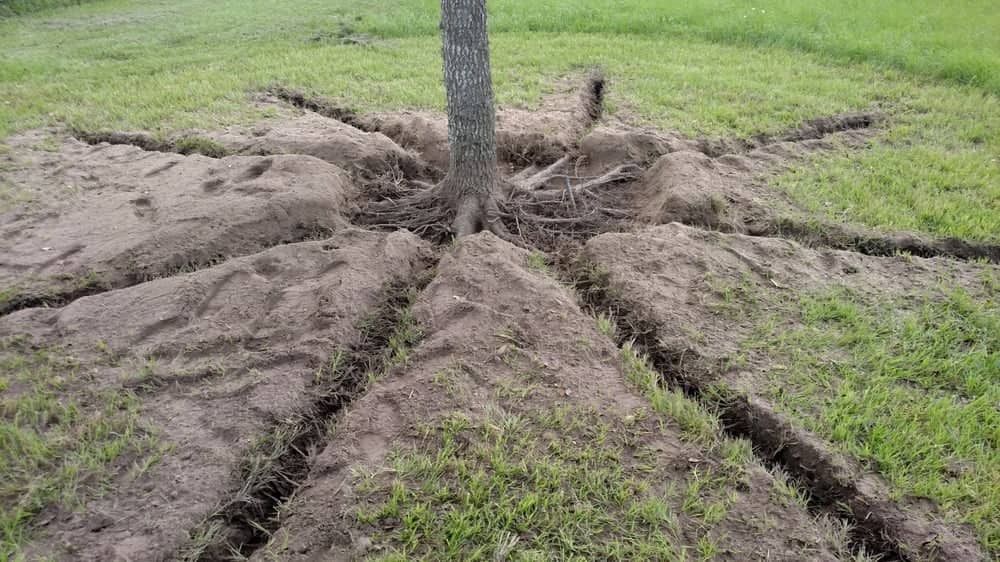
Recent Comments